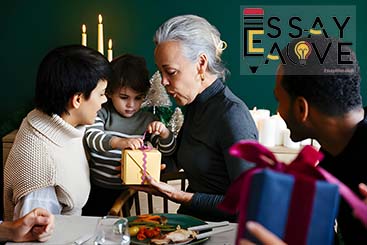This essay on the gift deeply explores its importance in culture and society. With over 760 words, it showcases how gifts can build relationships, commit us to certain obligations, and uphold societal connections.
It sheds light on the part played by gifts in current and olden societies. This work dives into the essence of a gift, looks at the theories regarding gifts, talks about the notion of counter-gifts, and scrutinizes the different ways and goals of gift exchanges in traditional societies.

Introduction
A gift is a simple idea woven into our human fabric, spanning time and places. Rather than just an item given by one person to another, a gift serves as a sign of our relationships, plans, and community ties. This piece dips into the many sides of gifts. We’ll discuss what a gift is, why we give them, the notion of a gift in return, and the ways and roles of gift-giving in older cultures.
What is a Gift?
Think of a gift. It’s something given freely. You don’t want anything in return. It could be anything. Maybe a book. Maybe a beautiful necklace. It doesn’t have to be something you can touch. Giving time or effort also counts. Giving a gift comes with feelings.
You might want to show love or thanks. You might want to show respect or friendship. But, gifts aren’t just about one person to another. They’re part of bigger pictures too. They’re part of our culture, our society, and our economy.
Gift Theory
Think about gift theory as it is studied by people like Marcel Mauss. It’s a set of rules telling us why we give gifts. Mauss, in his famous book “The Gift,” says gift-giving keeps relationships going strong.
He claims giving gifts isn’t just a kind act. It’s a promise for payback which keeps us socially connected. Mauss grouped gift-giving rules into three: one must give, receive, and return gifts. This keeps the gift cycle going and solidifies our social ties.
This circle isn’t just about “I owe you one,” but deep down, it’s a sign of our shared values: kindness, respect, and a sense of belonging.
The Gift and the Counter-Gift
The counter-gift principle is key in gift theory. Suppose someone gets a present. The understanding is that they’ll also give a present back. The return doesn’t have to be right away or of the same worth.
Yet, repay it they must. Balance and good-feelings in the relationships depend on it. The returning gift serves as a thank-you note, recognizing the initial gift. What does this tell us? It tells us that gift-giving is actually about social agreements.
These agreements lead to a sense of owing something and being thankful, thus strengthening social bonds.
Take weddings, for example, or other major life events. In many customs, there are thoughtful gift giveaways. These exchanges strengthen community connections and show how we support each other.
Gift Forms and Functions of Exchange in Archaic Societies
In olden days, gift-giving mattered a lot. It wasn’t just about being nice. It was part of everyday life and how people lived together. Studies say gifts had big roles. They shared resources and ranked people’s status.
One gift-giving ritual, the potlatch, was important to native groups on Canada and the U.S.’s Pacific Northwest Coast. At a potlatch, the host gave lots of stuff to guests. This made the host look good and important.
The guests had to give back later. This kept sharing resources and setting power balances going. The Kula ring on Papua New Guinea’s Trobriand Islands worked similarly. They traded shell necklaces and armbands.
These weren’t practically useful. They were like friendship bracelets. They showed people’s connections and promises to each other. The Kula ring connected islands across distances and made long-lasting social and political ties
In these societies, gifts were like Swiss Army knives. They made friendships, showed off wealth and power, and shared goods around. Gift-giving was deeply woven into life. It shows how give-and-take held communities together.
Conclusion
Giving gifts is a common act we see in all cultures. Gifts are more than just things. They also carry meanings that make social connections stronger. It’s kind of like a cycle – you give a gift, then you get a gift back.
This keeps relationships active and fair. Long time back, gifts were a big deal for people – that’s how they shared supplies and decided who’s who in the society. It’s not just about being nice or feeling obligated.
To put it simply, a gift a tool that keeps society running smoothly. It bridges gaps between cultures and times. If we really think about it, we’ll see how much of an effect this simple act has on our social life.
